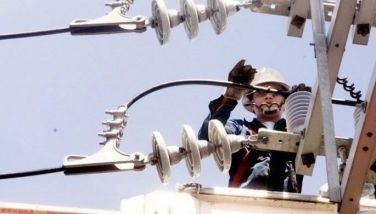Banking turmoil abroad and our banks

Over the last week and a half, the banking turmoil in the United States and in Europe has dominated financial news. US banking stocks, from March 1 to date fell by 21 percent.
A bank run of much larger scale has been nipped in the bud by the timely action of regulators, even though major ripples are still being felt. The good news is that more serious bank failures have been prevented.
Phl banks. For us in the Philippines, the question is how far such uncertainty and turmoil can affect the climate for growth and recovery.
This is dependent on domestic policies and also on the health of the overall world economy. We are not exempt from the vagaries of world influences, but sound economic policies can keep us out of range of bad developments.
In general, Philippine banks are in a strong position to weather the storm, thanks to recent efforts to raise bank capital requirements toward Basel standards in recent years.
According to the Philippine central bank, the country’s big banks are “well above international and regulatory standards.” The country’s big banks, on a consolidated basis, have 16.2 percent capital adequacy ratio. The BSP requires banks to have at least 10 percent capital adequacy ratio.
Silicon Valley Bank and other bank failures. The first of the bank failures in the United States was the Silicon Valley Bank (SVB). Founded only in 1983, the bank grew into a very large bank – one of the 20 largest banks in the US.
SVB grew rapidly as a bank by attracting large deposits from many successful start-up companies and investing the deposits in fixed securities (mostly in US Treasury bonds and in private bonds). As long as prices are relatively stable, banks are relatively safe from an “interest rate risk.”
The situation for SVB changed drastically when the Fed began raising bank interest rates to fight inflation. It was heavily invested in fixed income investments to generate income for its excess deposits. Bank management had invested nearly half of its $210 billion of assets in fixed income securities. With the sharp rise in interest rates undertaken by the US Fed’s inflation-fighting stance, SVB faced the prospects of heavy losses if it had to liquidate some of its fixed income investments to meet withdrawal demands of depositors if sizable enough. Otherwise, it would have to raise capital of equivalent amount to maintain adequacy requirements.
When this fact became publicly known, some tech company depositors began to withdraw their deposits. Unlike normal banks, which cater to many small depositors, SVB’s depositors were relatively few and bulky in their deposit sizes. The bank run was quick and devastating. In three days, the bank was placed under receivership by the Deposit Insurance Corporation.
Yet two days later, Signature Bank, another bank located in New York, suffered a similar bank run. It had assets of $110 billion, about half the size of Silicon Valley Bank.
In both cases, the US banking regulators (Treasury, the Fed, and Deposit Insurance Corporation), assured the general public that all depositors could get all their total deposits in the bank, regardless of whether they are insured or not. This assurance was a grand gesture to calm the general public that the banking system is sound and functioning.
Another very important reason was in relation to the technology industries. About 88 percent of the deposits in SVB of technological companies in America were above the insurance limit of $250,000. By allowing them full deposit recovery, the technological companies of America’s Silicon Valley are spared from economic harm due to banking failure. However, the bank’s equity owners were wiped off.
Also, SVB bank has many British high tech and bioscience companies as depositors in SVB’s United Kingdom venture. The British government has provided banking support and coverage to their companies that are linked to SVD to minimize the economic harm that they would suffer. There are also Chinese and Japanese companies with deposit relations to SVB bank.
The banking turmoil in Europe got extended to Credit Suisse, the biggest Swiss bank (recent listed total assets the equivalent of $570 billion). Despite its storied background, the bank was haunted by its recent decades of mismanagement and scandals, and its failed attempts at reforming its behavior. The failure of SVB was the germ that put Credit Suisse to its final fight for survival. The Swiss central bank intervened and arranged Credit Suisse’s forced sale to its competitor, the stronger Union Bank of Switzerland for a sum of $3.2 billion.
Even as this was happening, the First Republic Bank, located in San Francisco, was another regional bank that tottered from depositor confidence. In its case, American big banks were harnessed to to prop it up to meet its deposit liabilities. JP Morgan Chase gave it a credit line of $70 billion. To supplement it further, a consortium of large banks led by JP Morgan Chase extended another $30 billion.
The failure of SVB and of Signature Bank represents the second and third biggest bank failures in the United States and, also, in the world. The biggest bank failure happened in 2008 – the case of Washington Mutual, with $328 billion in assets. The failure of Credit Suisse would make it the biggest bank failure, surpassing the largest US bank failure in history.
For archives of previous Crossroads essays, go to: https://www.philstar.com/authors/1336383/gerardo-p-sicat. Visit this site for more information, feedback and commentary: http://econ.upd.edu.ph/gpsicat/
- Latest
- Trending






























